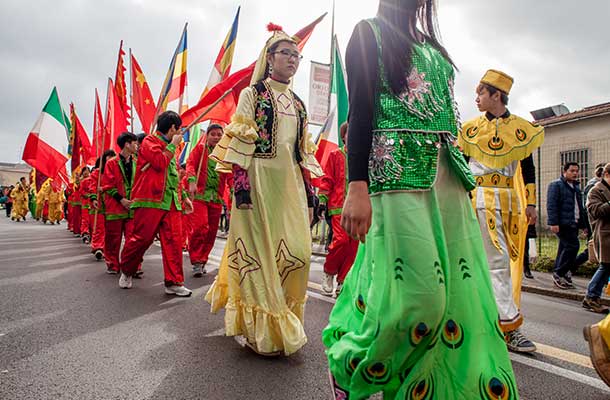Chun Jie (Spring Festival/Chinese New Year), China
At the high point of the Chinese year, you can expect colourful decorations, but not a whole lot of public merrymaking. For the most part, this is a family festival.
 Photo © iStock/Tahoo_gok
Photo © iStock/Tahoo_gok
- Location
- Dates
- Description
- Level of Participation
- Essentials
- Other Local Attractions
- Travel Safety Advice
Location
Beijing, Shanghai and Hong Kong.
Dates
Lunar New Year (between 19 January and 20 February)
Description
Chinese New Year is celebrated around much of the world – where there’s a Chinatown there’s invariably a Chinese New Year party – but there’s something special (if logistically frustrating) about being in one of China’s major cities for the festivities. The high point of the Chinese year, you can expect colourful decorations but not a whole lot of public merrymaking; for the most part, this is a family festival.
Throughout the country, the weeks in the build-up to the festival are an explosion of colour, with chūnlián (spring couplets) pasted on door posts, door gods brightening up alleys and streets, and shops glistening with red and gold decorations. Work colleagues and relatives present each other with red envelopes (hóngbāo) of money and the streets ring with cries of ‘gōngxǐ fācái’ (‘congratulations, make money’).
In Beijing, the White Cloud Temple, the Lama Temple and other temples stage entertaining miàohuì (temple fairs). Celebrations are also held in parks such as Ditan Park. At night the city echoes to the sound of continuous fireworks.
In Shanghai there’s an explosion of fireworks at midnight to welcome in the New Year and ward off bad spirits, and special services are held at Longhua Temple and Jing’an Temple. Top restaurants are booked out well in advance for niányèfàn (New Year’s Eve dinner). Another explosion of firecrackers on the fifth day of the New Year heralds the arrival of the God of Wealth.
In Hong Kong there’s a parade on the first day of the New Year, a fantastic fireworks display over Victoria Harbour on the second evening, and one of the year’s largest horse races is held at Sha Tin on day three.
In mainland China the New Year holiday extends for seven days, and legions of Chinese use it to head to the provinces to visit relatives – this can be a very difficult time to try to travel around China. In Hong Kong it’s a three-day holiday.
Level of Participation
3 – there’s a host of activities relating to Chinese New Year, and your level of involvement is up to you.
Essentials
This is China’s biggest holiday and all transport and hotels are booked solid. Demand for accommodation skyrockets and prices rise steeply. Many businesses shut up shop for a week.
Other Local Attractions
Beijing’s major sights are clustered around the huge concrete block of Tiananmen Sq, while sections of the Great Wall of China are within day-trip range of the city. Cosmopolitan Shanghai has fast become an eastern Milan, and shoppers will feel right at home on 5km-long Nanjing Rd. Take in the best Hong Kong vista from atop 552m Victoria Peak, with views across Kowloon, the business district and Victoria Harbour.
Travel Safety Advice
Chinese New Year is a very safe and very family oriented event. The only real advice we can give here is dont get too overzealous with firecrackers. Different laws relating to fireworks apply in different countries, ranging from outright prohibition down to "whatever you can afford to buy". But remember, if you are going to get cracking, you are putting your life at serious risk. Fireworks are exceptionally dangerous, and if you aren't an expert, then you are literally gambling with your limbs. Leave it to the experts, your fingers will thank you.
More Info: China National Tourism Administration, Hong Kong Tourism Board
Simple and flexible travel insurance
You can buy at home or while traveling, and claim online from anywhere in the world. With 150+ adventure activities covered and 24/7 emergency assistance.
Get a quote
No Comments